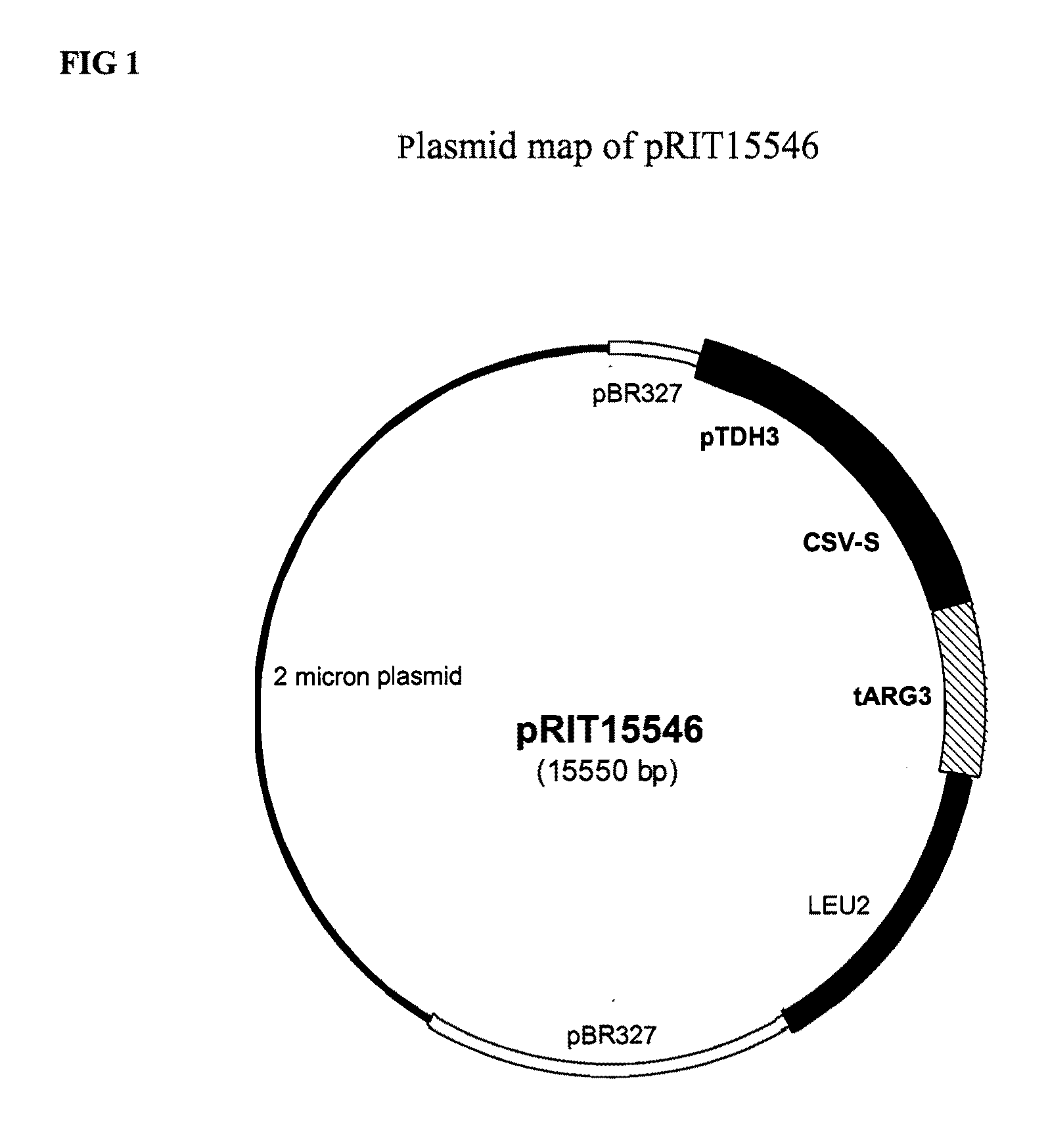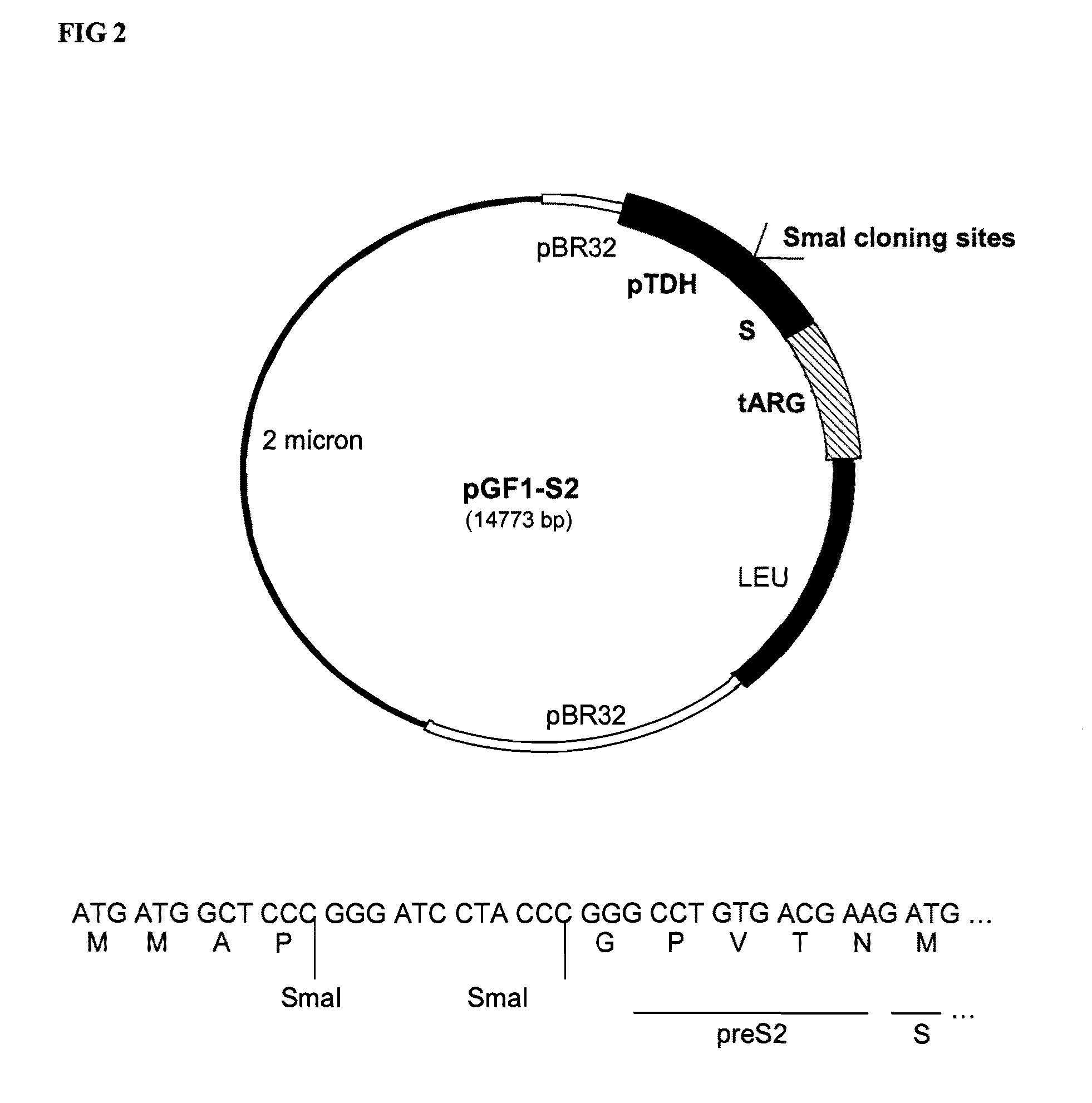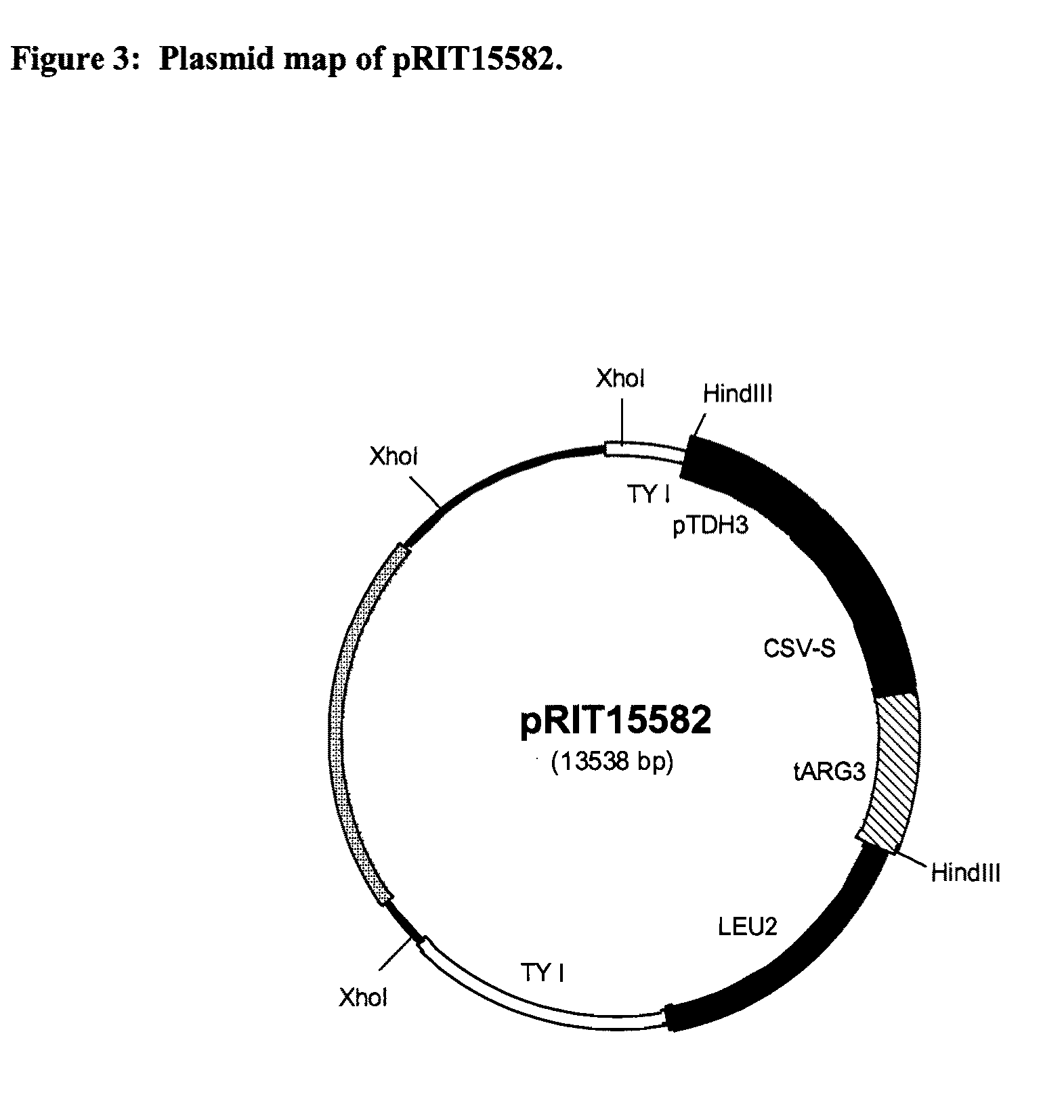Vaccines for malaria
a technology of lipoprotein and malaria vaccine, which is applied in the field of new lipoprotein particles, can solve the problems of complex life cycle of i>plasmodium /i>, spread of disease, and it is not practicable and logistically possible to manufacture a malaria vaccine for the general population based on this methodology
- Summary
- Abstract
- Description
- Claims
- Application Information
AI Technical Summary
Benefits of technology
Problems solved by technology
Method used
Image
Examples
example 1
Description of Strain Y1834
[0223]The yeast recombinant strain Y1834 may be used to express the fusion protein. It consists of the Saccharomyces cerevisiae host strain DC5 transformed with the recombinant expression vector pRIT15546.
[0224]DC5 is a laboratory yeast strain (ATCC No: 20820) with the following genotype: leu2-3, leu2-112, his3, can1-11. The double leu-2 mutation permits selection for the uptake and maintenance of the pRIT15546 vector which carries a functional LEU-2 gene copy. Only those cells carrying a vector with a LEU-2 gene can grow when leucine is absent from the growth medium.
[0225]The vector pRIT15546 is a yeast episomal expression vector (2μ-based vector) carrying the expression cassette. The recombinant expression is driven by a promoter derived from the yeast TDH3 gene (constitutive expression). The construction of pRIT15546 vector is detailed below.[0226]Construction of pRIT15546 vector.[0227]A synthetic gene, with an appropriate codon usage for yeast expressi...
example 2
Description of Strain Y1835
[0242]The yeast recombinant strain Y1835 simultaneously expresses the CSV-S fusion protein and the S antigen. To obtain a strain co-expressing CSV-S and S proteins, the Saccharomyces cerevisiae strain Y1295, which already carries five integrated copies of S expression cassettes, was transformed with the recombinant integrative expression vector pRIT15582.
[0243]The strain Y1295 was constructed at GSK by a multistep transformation procedure. The construction of Y1295 strain is described in WO 93 / 10152. Strain Y1295 has the following genotype: leu2-3, leu2-112, gall. The leu-2 mutation permits selection for the uptake of pRIT15582-derived linear DNA fragment which carries the CSV-S cassette and the functional LEU2 gene.
[0244]The vector pRIT15582 is a yeast integrative expression vector (Ty-based vector) carrying the CSV-S expression cassette. The recombinant expression is driven by a promoter derived from the yeast TDH3 gene (constitutive expression). The con...
example 3
Description of Strain Y1845
[0263]The yeast recombinant strain Y1845 simultaneously expresses the CSV-S fusion protein, the RTS fusion and the S antigen. To obtain a strain co-expressing CSV-S, RTS and S proteins, the Saccharomyces cerevisiae strain Y1295, which already carries five integrated copies of S expression cassettes, was transformed with an equimolar solution of RTS and CSV-S linear DNA fragments derived from pRIT13540 and pRIT15582 integrative vector, respectively.
[0264]The strain Y1295 was constructed at GSK by a multistep transformation procedure. The construction of Y1295 strain is described in WO 093 / 10152 file. Strain Y1295 has the following genotype: leu2-3, leu2-112, gall. The leu-2 mutation permits selection for the uptake of pRIT15582-derived linear DNA fragment which carries the CSV-S cassette and the functional LEU2 gene.
[0265]The vectors pRIT13540 and pRIT15582 are yeast integrative expression vectors (Ty-based vector) carrying the RTS and CSV-S expression cass...
PUM
| Property | Measurement | Unit |
|---|---|---|
| Fraction | aaaaa | aaaaa |
| Fraction | aaaaa | aaaaa |
| Fraction | aaaaa | aaaaa |
Abstract
Description
Claims
Application Information
 Login to View More
Login to View More - R&D
- Intellectual Property
- Life Sciences
- Materials
- Tech Scout
- Unparalleled Data Quality
- Higher Quality Content
- 60% Fewer Hallucinations
Browse by: Latest US Patents, China's latest patents, Technical Efficacy Thesaurus, Application Domain, Technology Topic, Popular Technical Reports.
© 2025 PatSnap. All rights reserved.Legal|Privacy policy|Modern Slavery Act Transparency Statement|Sitemap|About US| Contact US: help@patsnap.com



